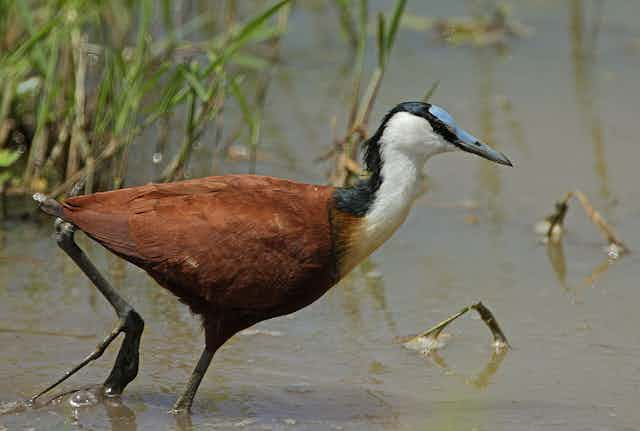Why do some species exhibit patterns of reversed gender roles? That question was addressed in a Nature Communications paper published yesterday.
Typically in animals, females tend to invest more in caring for offspring than males, who, as a result, generally invest more in competing for mates, through physical contests and showy displays. But in a minority of species across the animal kingdom these traditional roles are reversed.
In animals as diverse as birds, frogs and fish, males provide nearly all of the care for the offspring and females compete for mates, becoming more highly ornamented than the male in many of these species.
In their Nature Communications paper, András Liker of the University of Sheffield and colleagues focused on a comparison of many of the species of shorebirds that exhibit a lot of variation in parental care patterns.
Some species, such as the spur-winged plover, are socially monogamous, with the male and female forming a pair bond and contributing almost equally to rearing the offspring. In other species, such as the ruff, females incubate the eggs and look after the chicks on their own.
Finally, species such as the jacana show gender role reversal with females deserting the eggs as soon as they are laid, and the male conducting all of the incubation and care of the offspring on their own.
Comparing data across 18 different species of shorebird, the study found the pattern of parental care was strongly affected by the adult sex ratio in each species.
In those species in which males were more common than females, males performed more care for their offspring.
At first this might seem counter-intuitive because such circumstances might be those in which we expect to see greater levels of competition amongst males for the opportunity to attract a mate. But, in fact, evolutionary selection does not work like that.
The overall ratio of males to females in some of these species’ populations varied significantly from 50:50, with skews in the adult sex ratio of over 70:30 in some cases.
Such biases determine the value of individuals of the different sexes as mates and that in turn drives the pattern of parental care that we see.
In a species in which males are more common, a male who is lucky enough to get a mate is statistically unlikely to get another one in the future and should devote all his efforts in maximising his reproductive success from the eggs that are produced with that female.
Conversely, his female partner will have no problem finding a new partner who is willing to mate with her because of the male surplus in the population.
As a result, when males are more common, females are deserting their first partner once they have laid eggs and doubling their own reproductive success by taking a new partner with whom they produce a second clutch of eggs.
This strategy works for females because the first, deserted partner will still care for the eggs on his own because it is the most realistic option he has for reproducing. She has essentially got him over a barrel.
The same process works in reverse in those populations in which females are the more common sex.
This study is important because it demonstrates how the sex ratio of adults affects the value of males and females, and how that in turn alters the investment the different sexes will commit to parental care, and treat their partner.
The basic evolutionary dynamics of parental investment and altered sex ratios are likely to be universal across sexually-reproducing animals and this study might help to predict the social consequences that will be seen as the sex-biased human populations of China and India mature to reproductive age in the coming decade.

